This year’s TernoCon contestants honor the Balintawak dress through a modern lens.
Twelve finalists were invited to debut their designs at the third edition of TernoCon, held at the Cultural Center of the Philippines’ Tanghalang Ignacio Gimenez Black Box Theatre last Saturday.
READ ALSO: Interpretations Of Cultural Fashion: See The Personalities Present At This Year’s TernoCon

Among the finalists is this year’s winner, Yssa Inumerable, who received the Pacita Longos award for her designs. Runner-up Gabbie Sarenas took home the Pura Escurdia award and Glady Rose Pantua received the Ramon Valera award for third place.
According to the competition’s website, the Balintawak’s key components include a camisa (blouse) with butterfly sleeves, a saya (skirt), an alampay (kerchief), and a tapis (a piece of cloth wrapped around the waist).
The dress was worn by Filipino women in the 1920s and 1930s to town fiestas, picnics, and pilgrimages to Antipolo.

“I chose the Balintawak in particular because I thought that since we’re emerging from the Pandemic, it’s the most appropriate attire,” says TernoCon artistic director Gino Gonzales.
“It’s a less formal version of the terno and it also connects people to the countryside, which is what people are pining for these days. In a way, it’s also less ostentatious… It’s the right time for it.”
The competition welcomed designers from all over the country for the first time since the pandemic.
Designers from NCR include Yssa Inumerable from Parañaque, Geom Hernandez from Batangas, and Dee Javier from Manila. Representing Luzon, we have Amor Albano from Ilocos Norte, Glyn Alley Magtibay from Oriental Mindoro, Bon Hansen Reyes from Rizal, and Gabbie Sarenas from Rizal.

All the way from Visayas, we have designers Bree Esplanada from Cebu, Karl Nadales from Iloilo, Al Rey Rosano from Negros Oriental, and Marc Carcillar from Iloilo. And lastly, from Mindanao, Glady Rose Pantua from Zamboanga made it to TernoCon’s finale.
Each contestant was mentored by one of the competition’s veteran designers, including Inno Sotto, Denis Lustico, Chito Vijandre, Ricky Toledo, and Joey Samson.
Glady Rose Pantua, the bronze awardee, featured local textiles from her city in her collection, as seen in the pants’ weaving and the delicate beading on the sheer fabric.
Runner-up Gabbie Sarenas leaned more towards the colors of a traditional Filipiniana, but with a more relaxed look, with a mix of modern patterns and floral drapings.

Lastly, this year’s winner Yssa Inumerable mixed local and Western styles in her collection. Using the traditional patterns and structure of the Balintawak, Inumerable incorporated elements of the classic 1800s Gibson Girl look.
The designs are completed with vivid fabrics and floral embroidery on the dress’ signature butterfly sleeves, creating a balance between the two contrasting cultures.

Inumerable says she envisioned her collection to “redefine the balintawak into something more revered, valued and respected, with the ideals of a 21st-century Filipina.”
Silver medal winner Gabbie Sarenas, who had the modern woman in mind, titled her collection “Sumpa Kita” from the sampaguita. “So it’s a promise. It’s always been that soul of the sampaguita that I put in my heart,” she says.
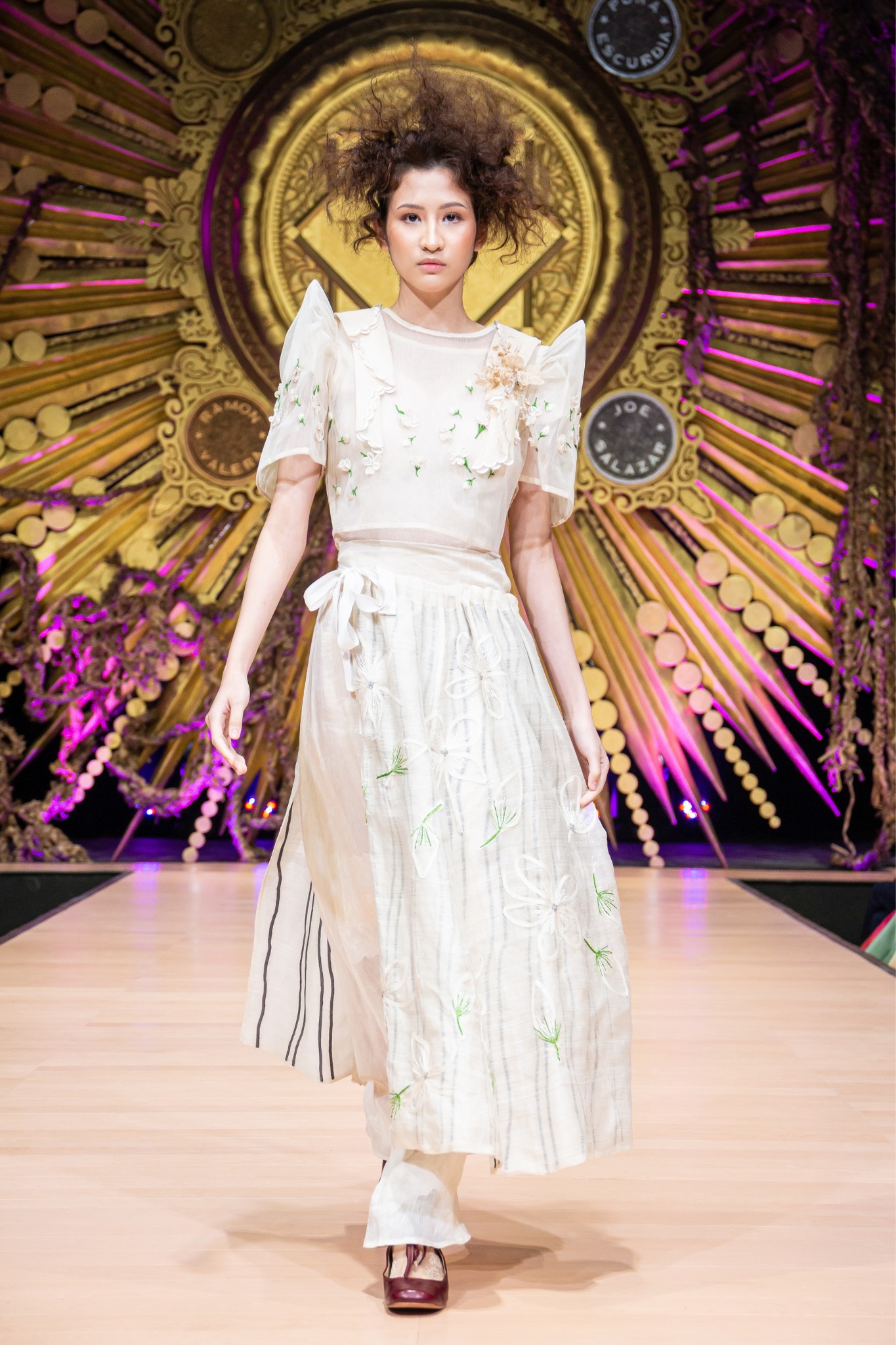
Second runner-up Glady Rose Pantua commented how “we usually associate the balintawak with colonial Manila and the Visayas only but never our city of Zamboanga in Mindanao.”
She used embroidery and beading, skills she learned from her lola, to create intricate designs of flora and cultural icons on her pieces.
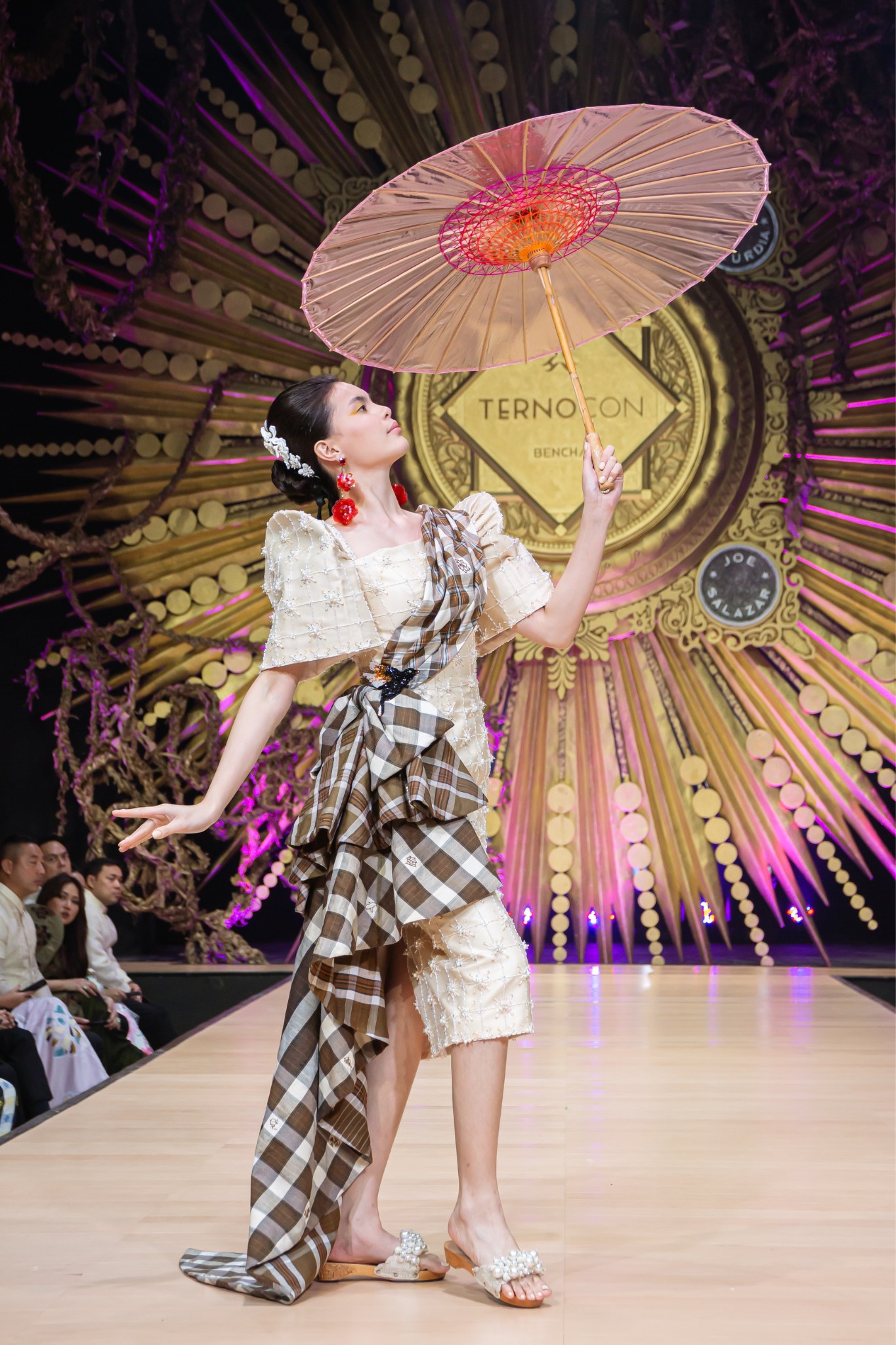
Fellow finalist, Amor Albano, received special recognition for winning the Joe Salazar Award (Chief Mentor’s Medal) by Inno Sotto.
For her collection, she says she was inspired by the lightness of the layers of pabalat pastillas wrappers as well as the paintings she saw at the National Museum. This resulted in balintawak dresses with flowy tiers of organza, reminiscent of the layers of brushstrokes of Filipino artists.
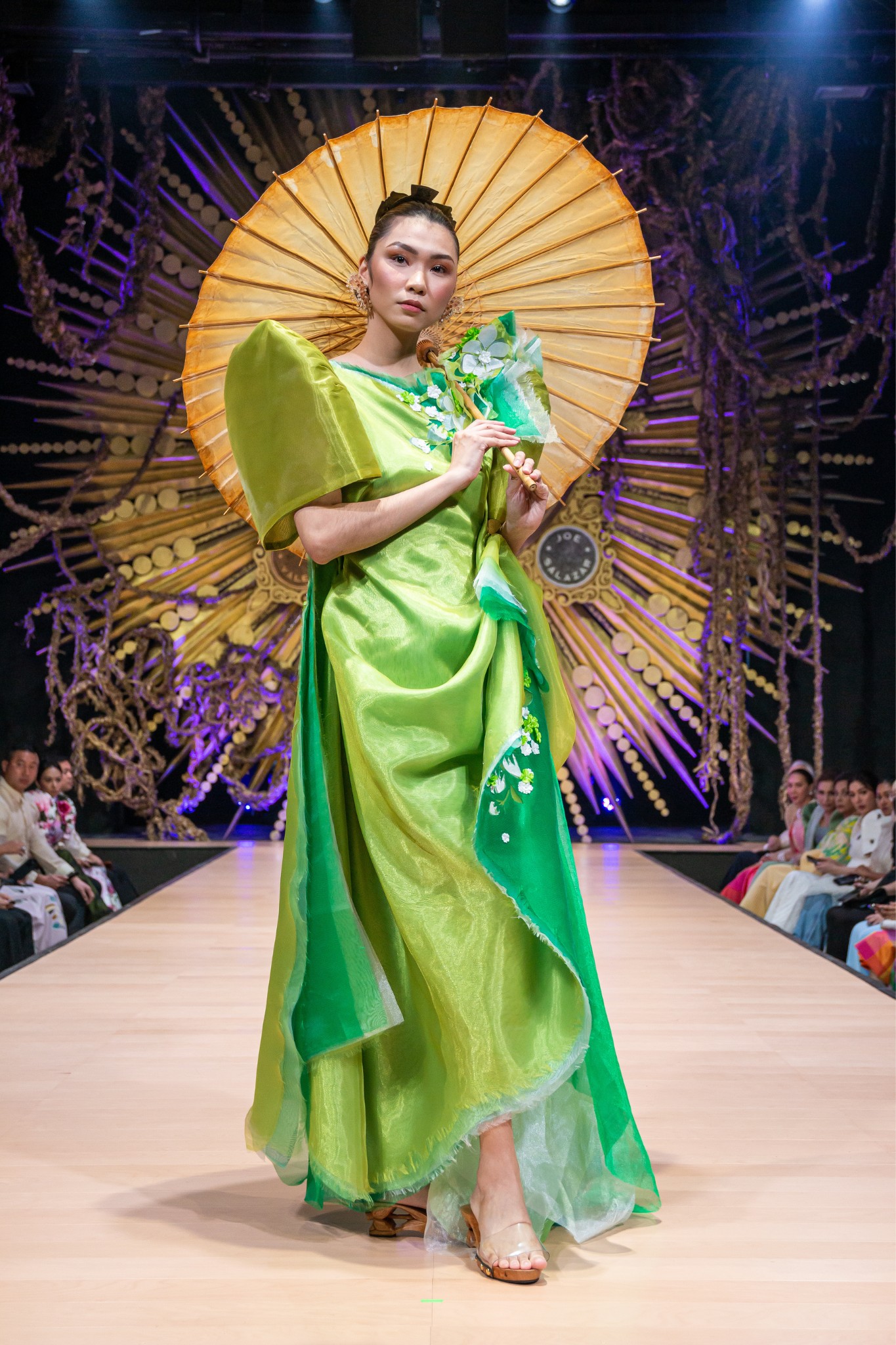
For Bon Hansen Reyes’ designs, he says he “played with the tapis and alampay using menswear techniques—a big collar for the alampay and a button-down shirt for the tapis—to create pieces that were genderless and everybody can wear.”
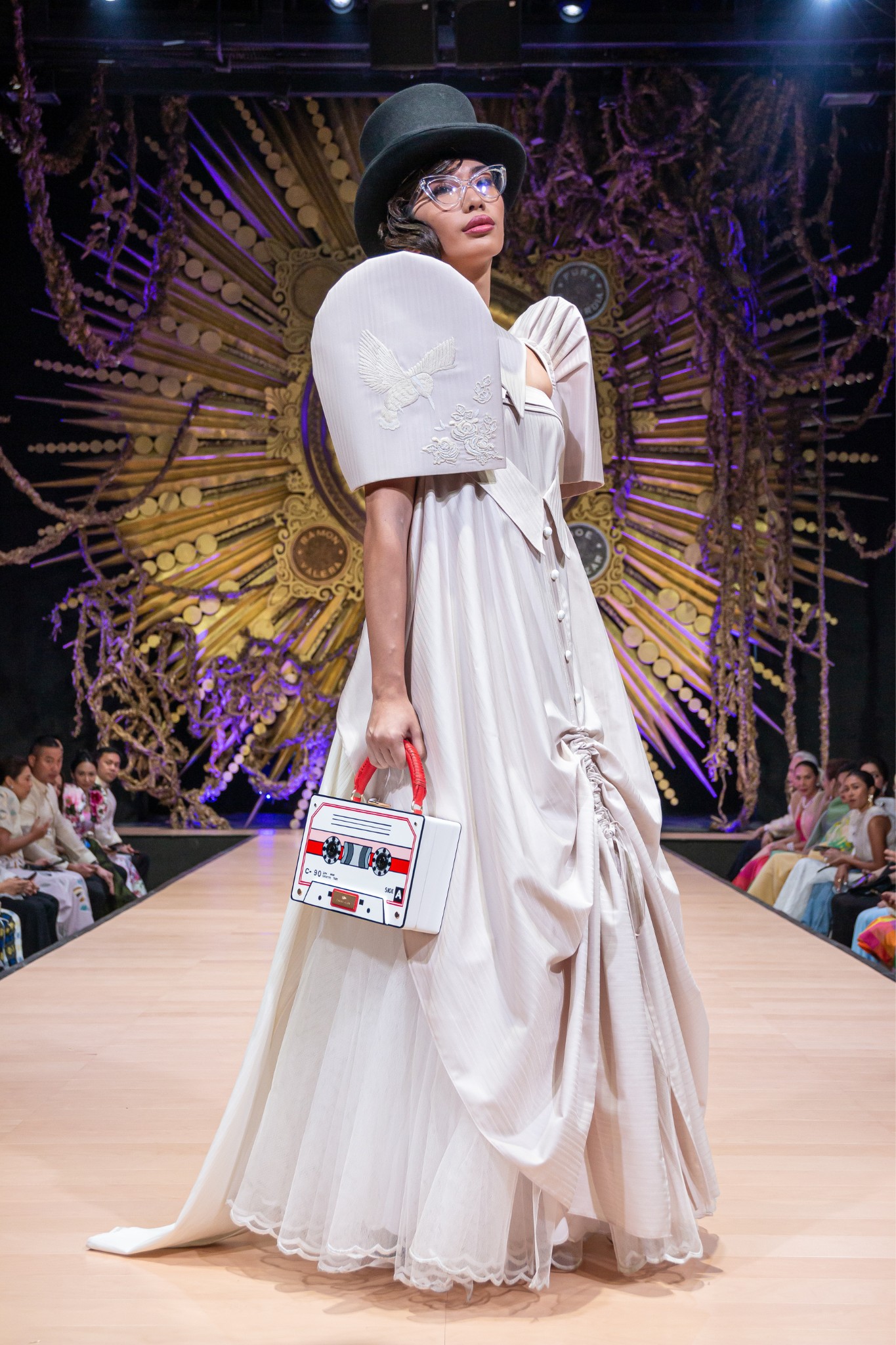
Marc Carcillar says his designs reflect “the imperfections and hardships of the creative industry,” recalling his experience with the challenges of designing and crafting a garment.
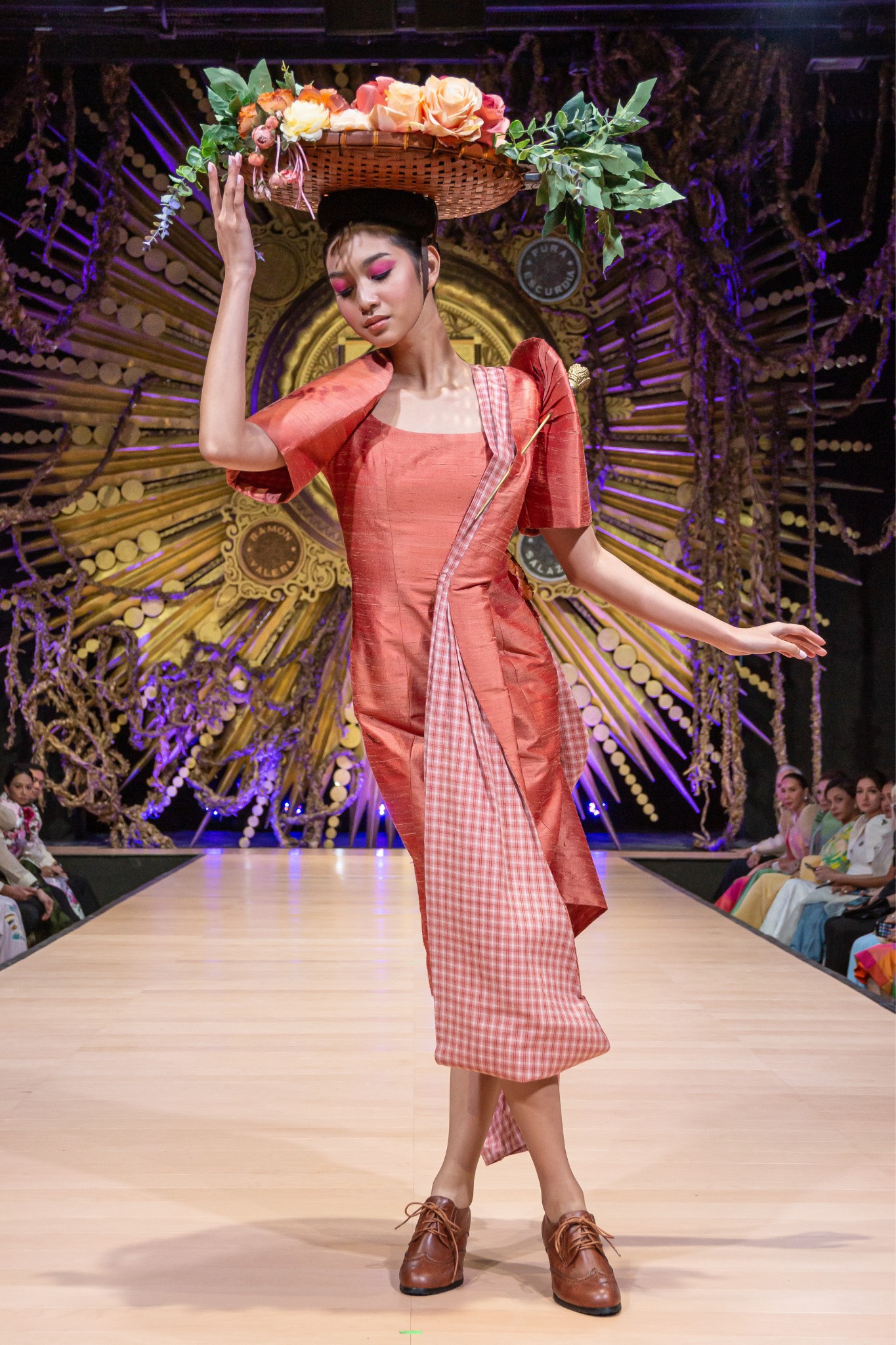
Al Rey Rosano translates the sunset in his designs using chiffon and organza in subtle gradients of colors.
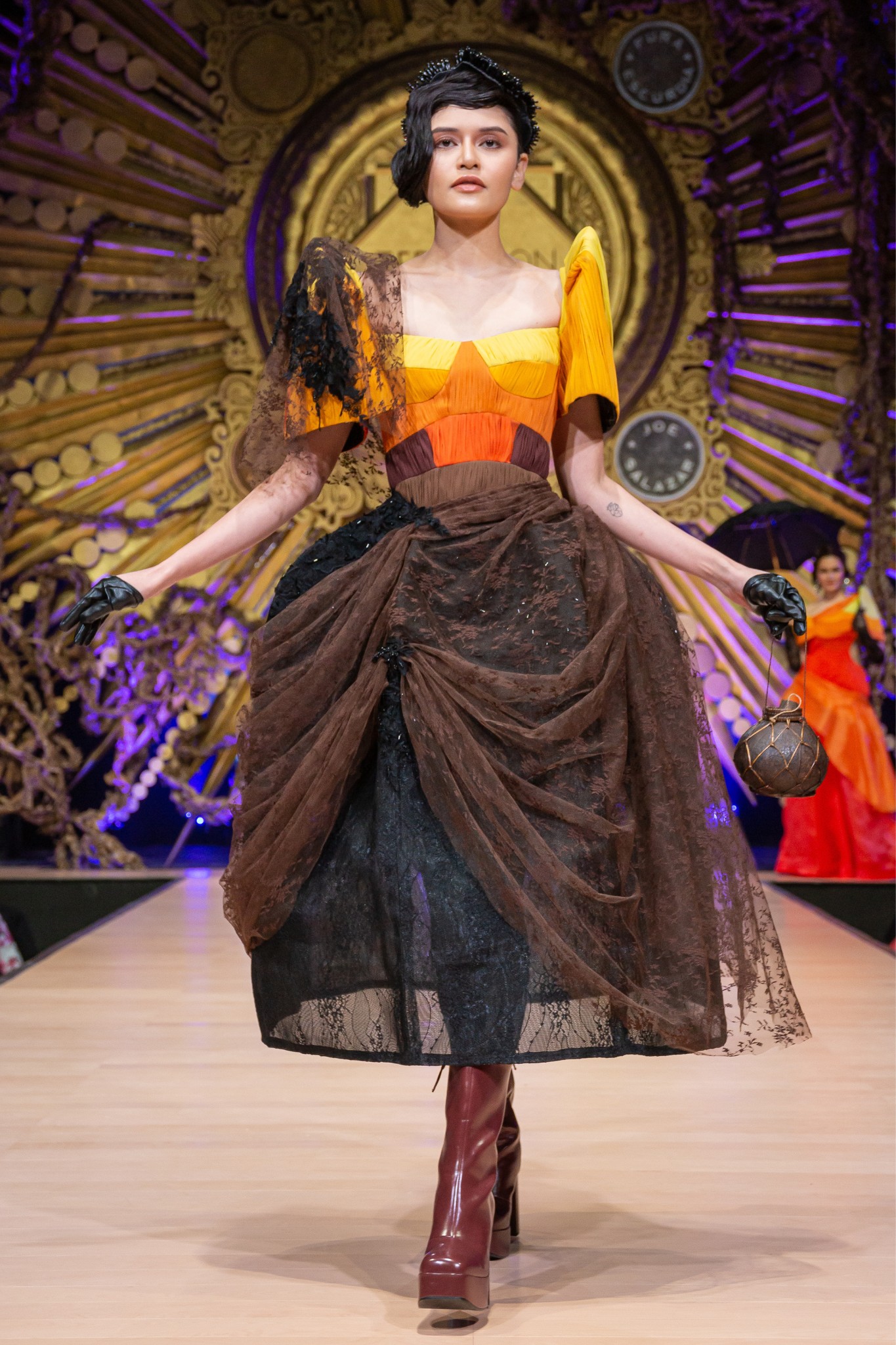
Karl Nadales deconstructed the balintawak to create a conceptual piece using found objects and fabric scraps.
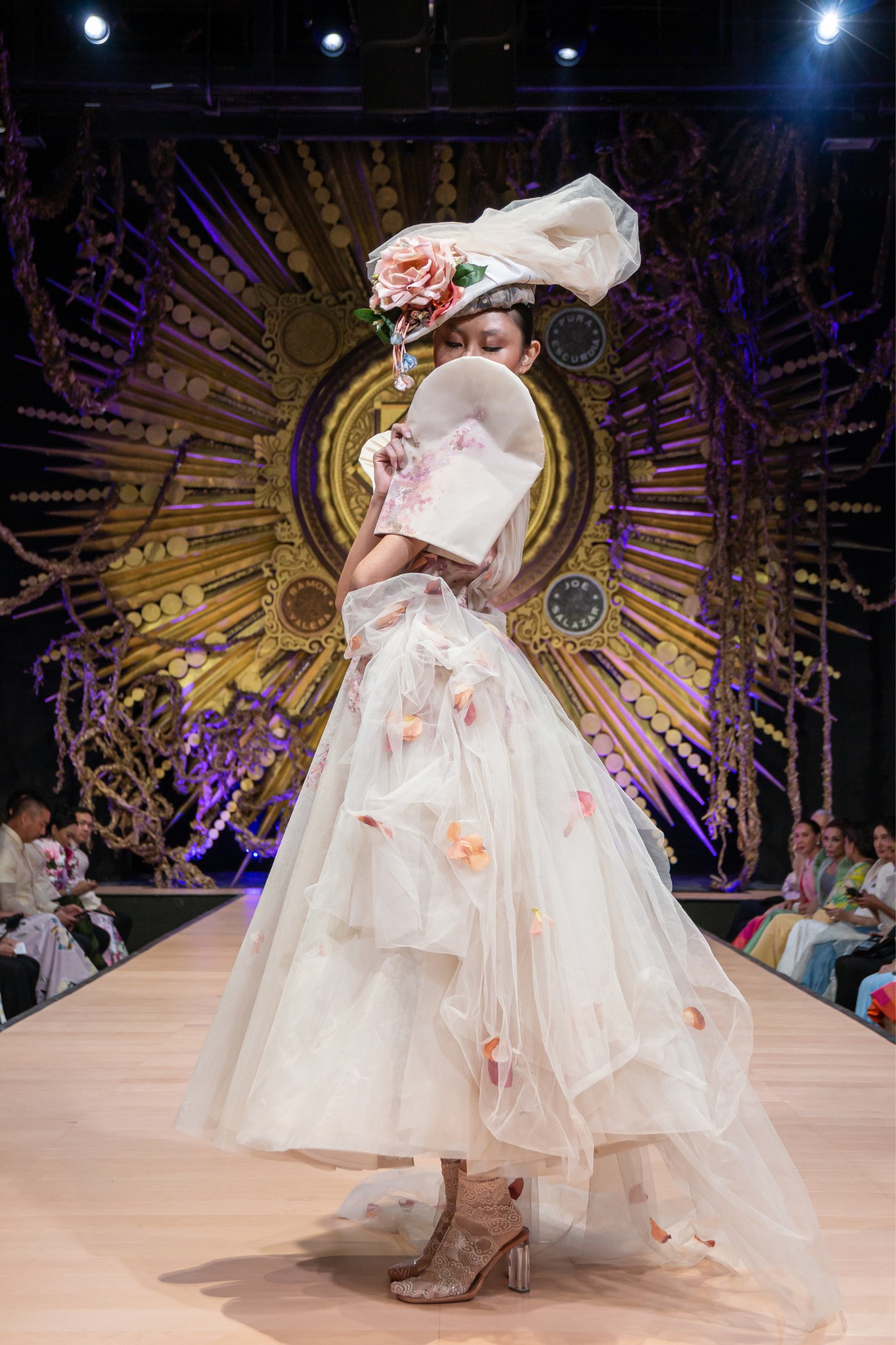
Glynn Alley Magtibay found inspiration while looking at X-rays at her local hospital. Her unusual, contemporary designs were also made with sustainability in mind.
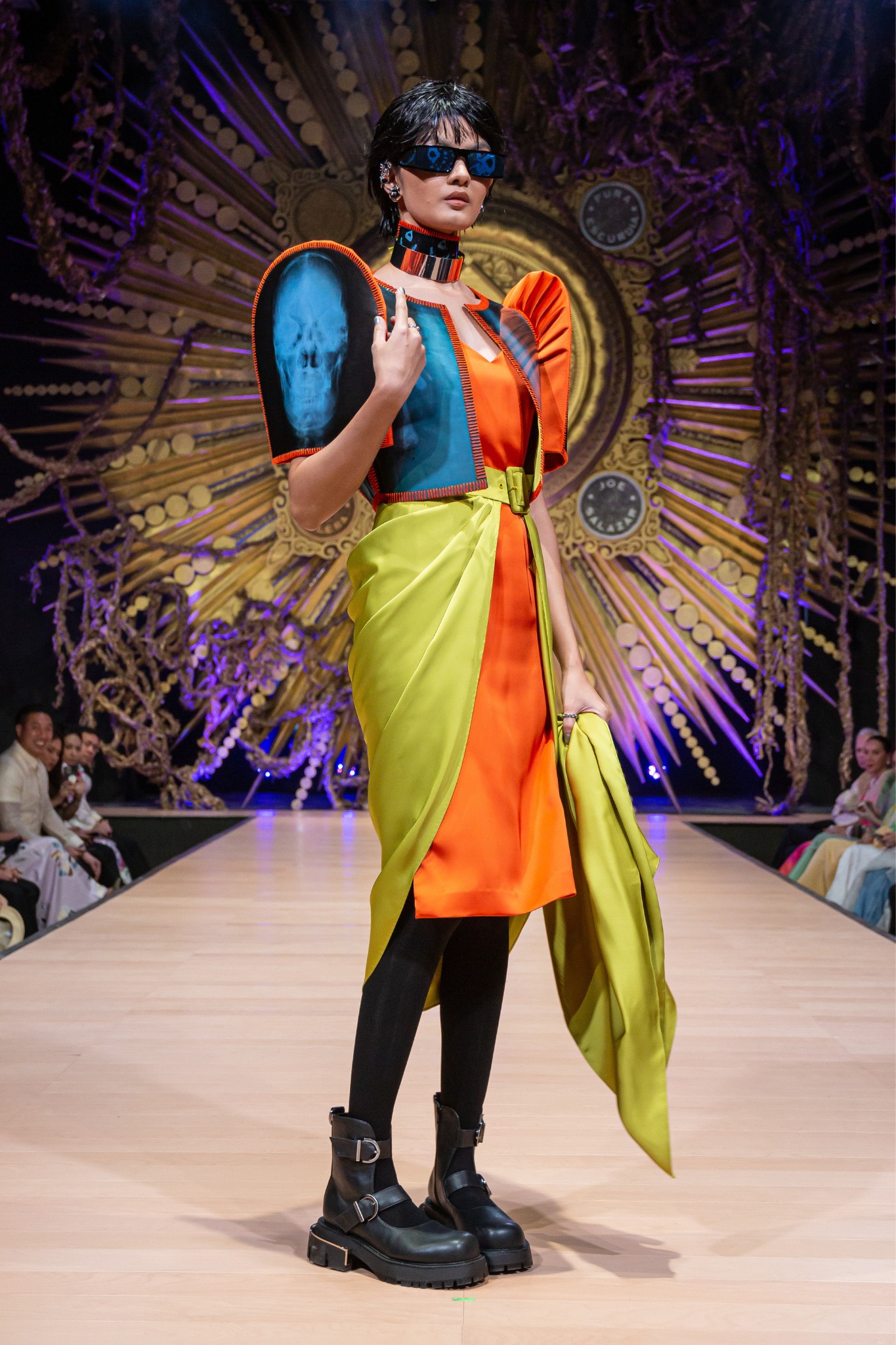
Dee Javier’s designs, rooted in his relationship, made use of crumpled love letters and verses from Florante at Laura.
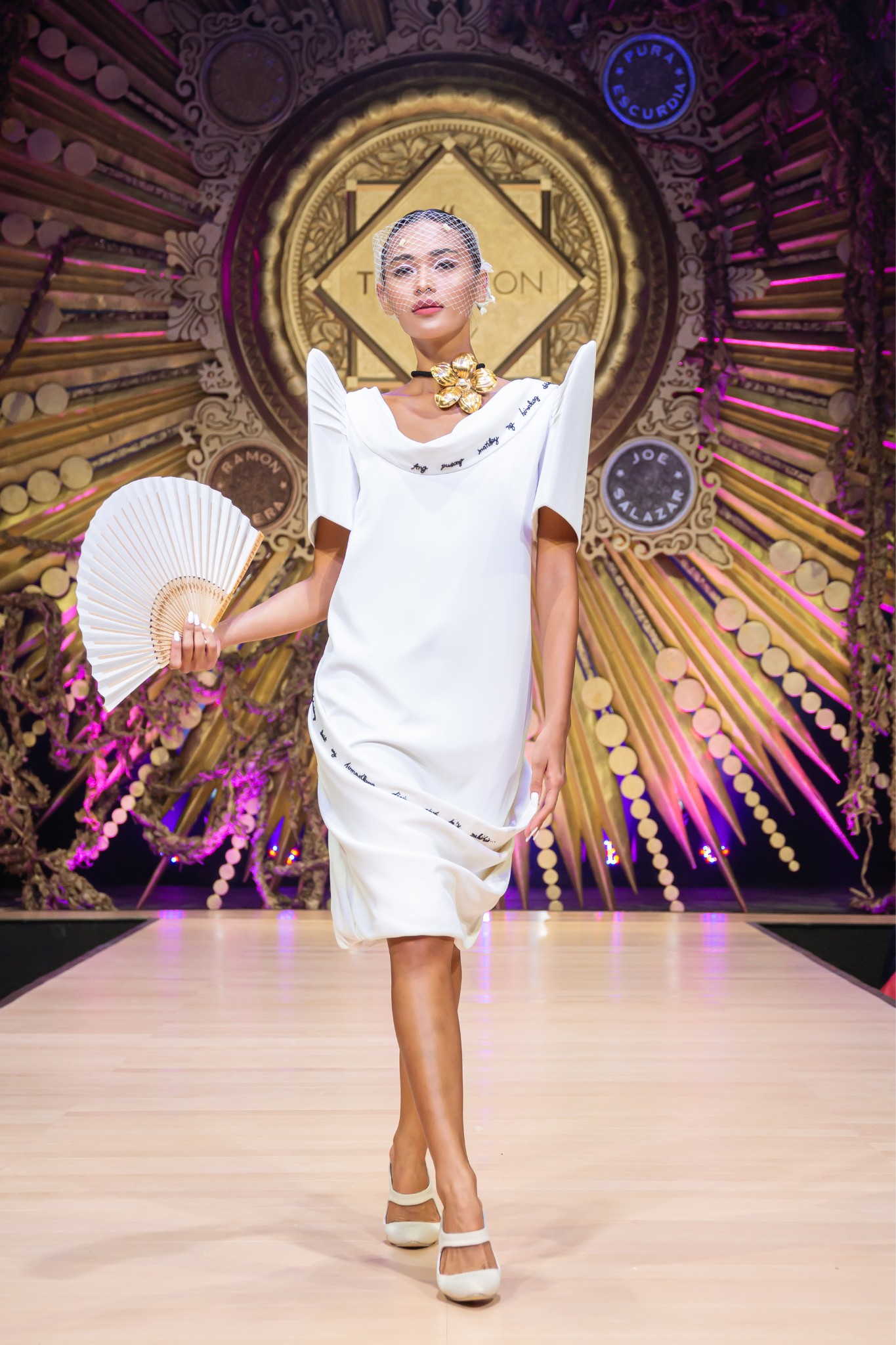
Geom Hernandez’s designs aim for inclusivity, so that “whatever vibe, style or body shape you have, there will always be a terno and balintawak for you.”
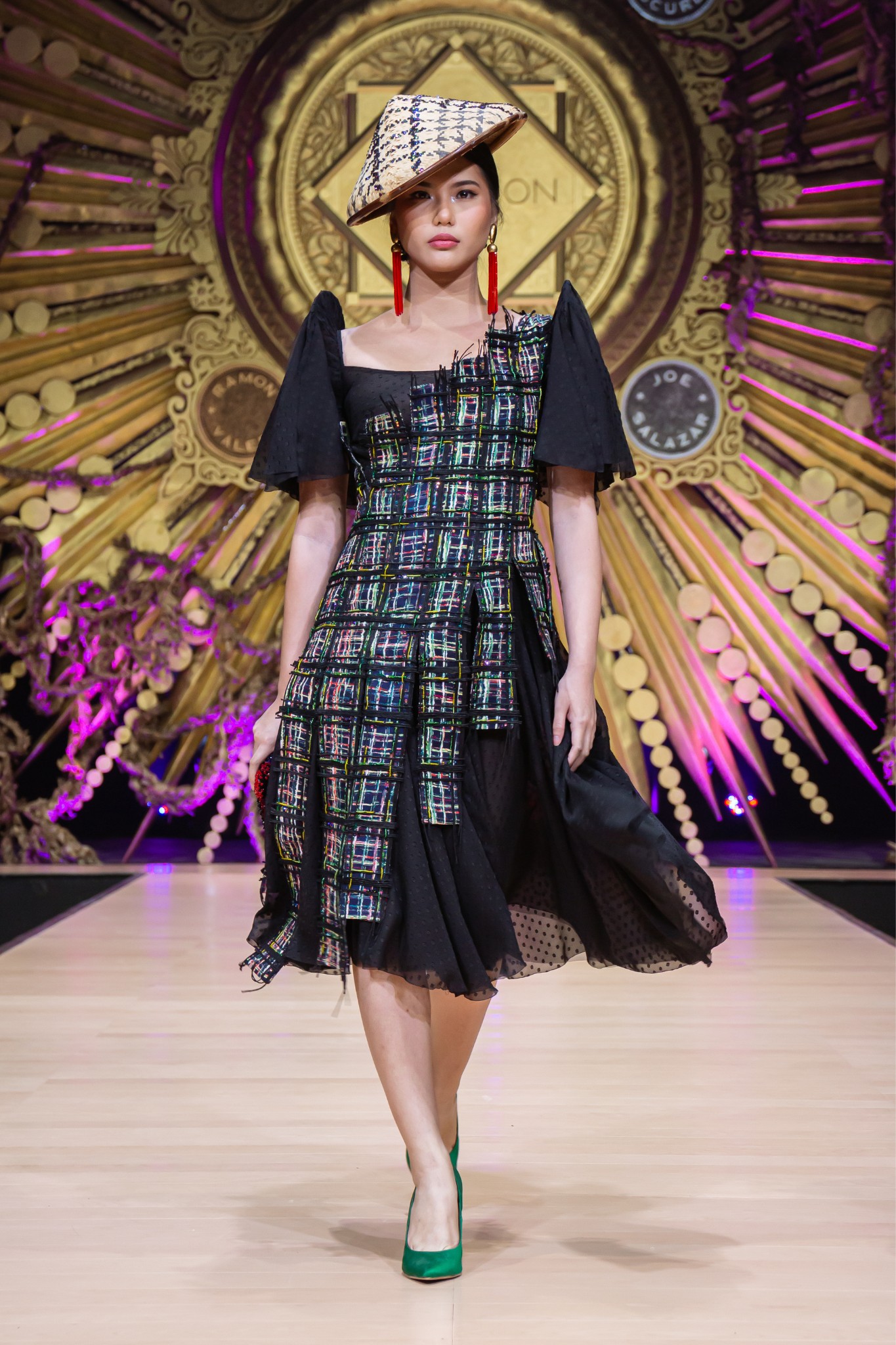
Bree Esplanada draws inspiration from taboo things, folklore, and horror, finding beauty in the dark.
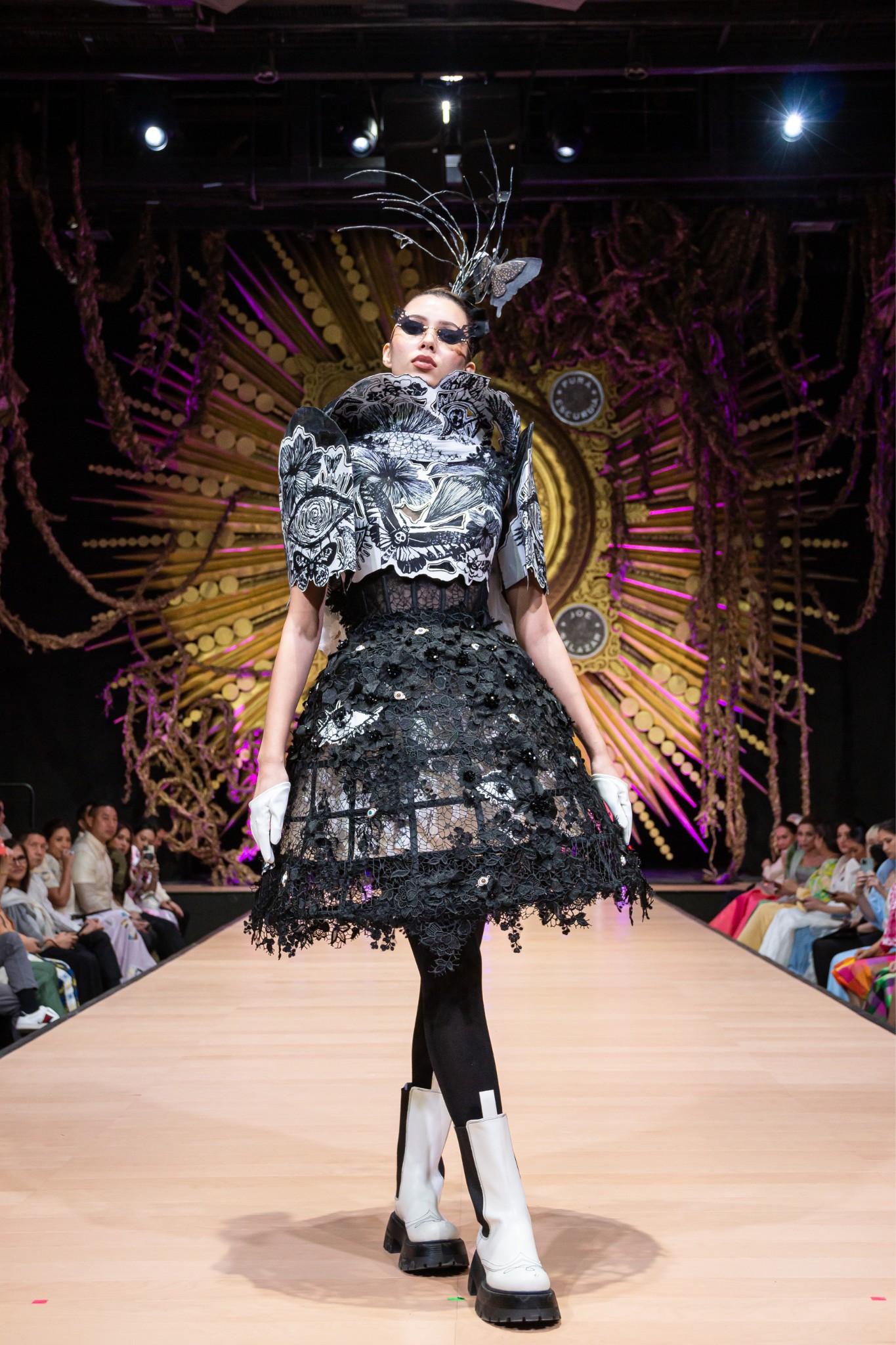
Mentors Ricky Toledo and Chito Vijandre say that this year’s TernoCon was a success because of how it has “moved the design and appreciation of our national dress forward—appreciating its history while making it relevant for the times.”
Banner image courtesy of TernoCon.





